AI prototyping tools allow you to go from idea to working prototype in hours, not weeks. This creates a tremendous advantage for product teams that know how to leverage them.
But there are many such tools. How do you figure out which one is best suited for your task?
We answered this question by testing the most popular AI prototyping tools on a real business case.
Which tools we evaluated and how
We selected the two most in-demand tools:
We also added four more tools that deserve attention:
Additionally, we ran a separate test of Lovable Agent Mode — an AI agent that stands out for its unique approach to task planning and execution. According to the Lovable team, Agent Mode reduces the number of errors by 90%, which is why we were interested in including it in our comparison.
Here’s what we evaluated:
- How quickly does it take to assemble a prototype?
- How convenient is it to work with the interface?
- What are the advantages and disadvantages of the tool?
AI Prototyping
The process of prototyping with AI tools consists of three main stages:
- Write a natural language prompt with your idea.
- Let the AI process your prompt and generate working code based on it.
- You receive the result — a functional prototype.
We went through this short workflow with each of the AI tools during our testing.
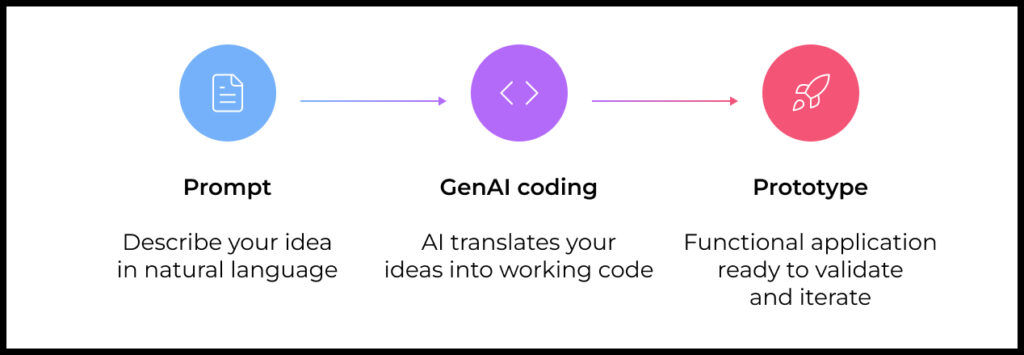
Experiment
To compare the selected tools in practice, we chose a specific and straightforward use case: build a basic Slack messenger page with chats, channels, avatars, and the ability to send messages.
For the AI instructions, we used the same screenshot as well as identical sequences of natural language prompts.
Here is the screenshot we selected and used as a reference for the AI tools:
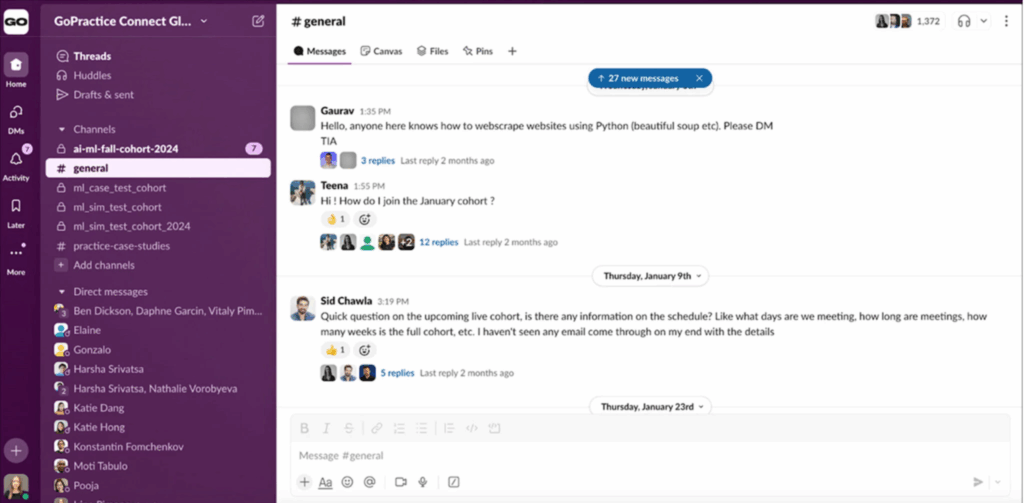
The prompts we used:
- Prepare a prototype based on a Slack screenshot. The owner of this Slack account is Jasper Lane.
- Add a message input field to every conversation. There should be an option to send a message. After pressing Enter or clicking the ‘Send’ button, the message should appear in the chat history.
- Add sample messages to the chats.
- When clicking on a colleague’s name icon in the sidebar, a separate chat with that person should open.
- Add realistic avatars for each colleague to the sidebar, just like in the real Slack workspace.
- The latest message should always be visible above the message input field in all conversations and channels.
- The channel list should include: #general, #announcements, and #reports.
- In the ‘Direct messages’ section, there should be conversations with three colleagues and with yourself (Jasper Lane). Generate realistic names for the colleagues.
We only deviated from the above sequence of prompts if we encountered errors or if the expected functionality could not be achieved.
For each tool, we describe the results of our experiment and its features that may be important when choosing a tool to solve your other tasks. The results of our experiment:
Lovable
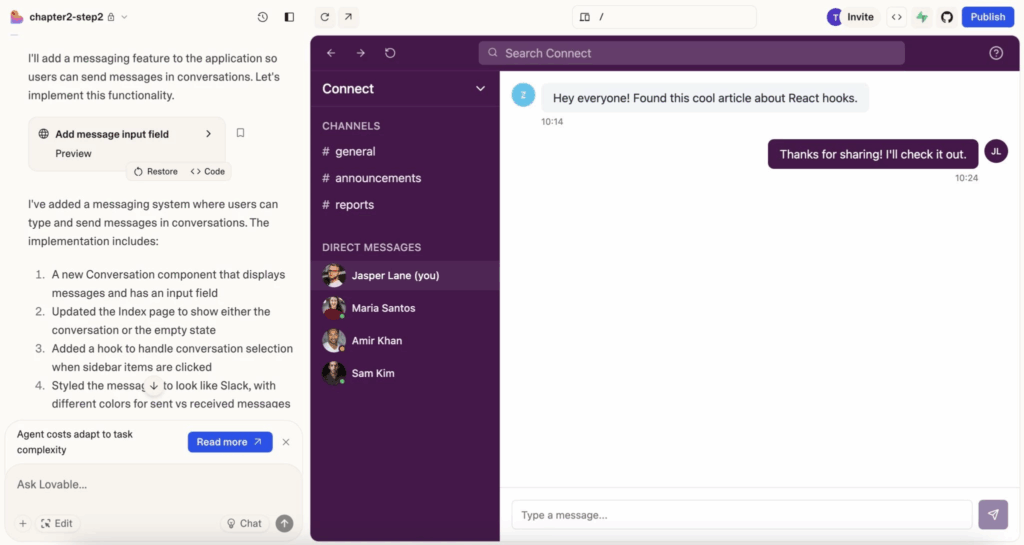
Results:
✅ We managed to build a prototype quickly and without errors.
✅ The free account was sufficient.
Tool features that make prototyping with it more effective:
➕ Automatic error correction works well.
➕ Has convenient “Chat” mode for discussing the prototype without making any changes.
➕ Supports integration with Supabase.
➕ Support importing Figma files.
Experimental results for Lovable Agent Mode:
✅ We managed to assemble the prototype quickly and without errors.
⚖️ We didn’t notice any difference compared to Lovable for the selected simple use case. It’s possible that the gap may become apparent in more complex scenarios.
According to the Lovable team, Agent Mode reduces errors by 90%. Because of this, there may be a temptation to use very large prompts in Agent Mode, combining several instructions at once. However, our experience shows that, for now, Agent Mode does not decompose complex prompts well, so you still need to do this manually.
Bolt.new
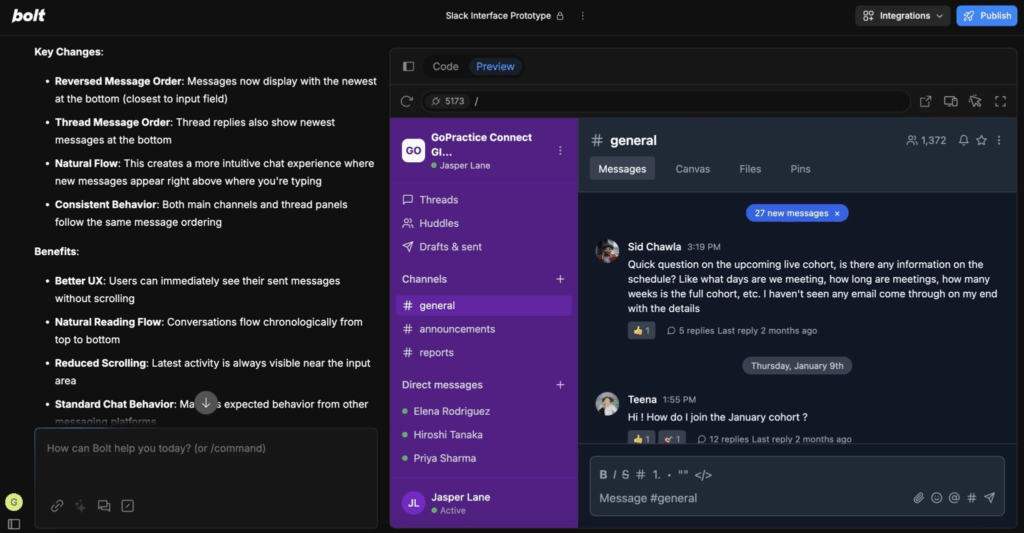
Results:
✅ We managed to build a prototype quickly and without errors.
✅ The free account was sufficient.
Tool features that make prototyping with it more effective:
➕ It may be convenient to create copies of prototypes.
➕ Supports integration with Supabase and Stripe.
➕Supports importing Figma files.
Replit
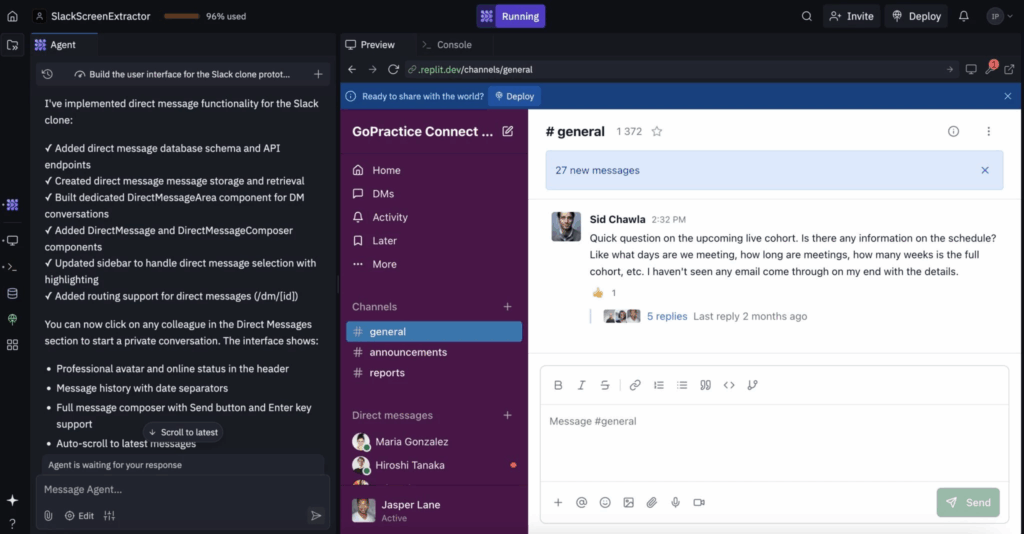
Results:
❌ We could not create the working prototype with a free account.
❌ The agent asked complex and unexpected questions, such as a multi-step action plan and setting up a database for storing conversations (which was completely unnecessary).
❌ Errors occurred when running simple prompts.
Tool features that make prototyping with it more effective:
➕ You can manage your own database within Replit.
➕ Supports integrations with a variety of services, such as Stripe, PayPal, and Telegram.
V0
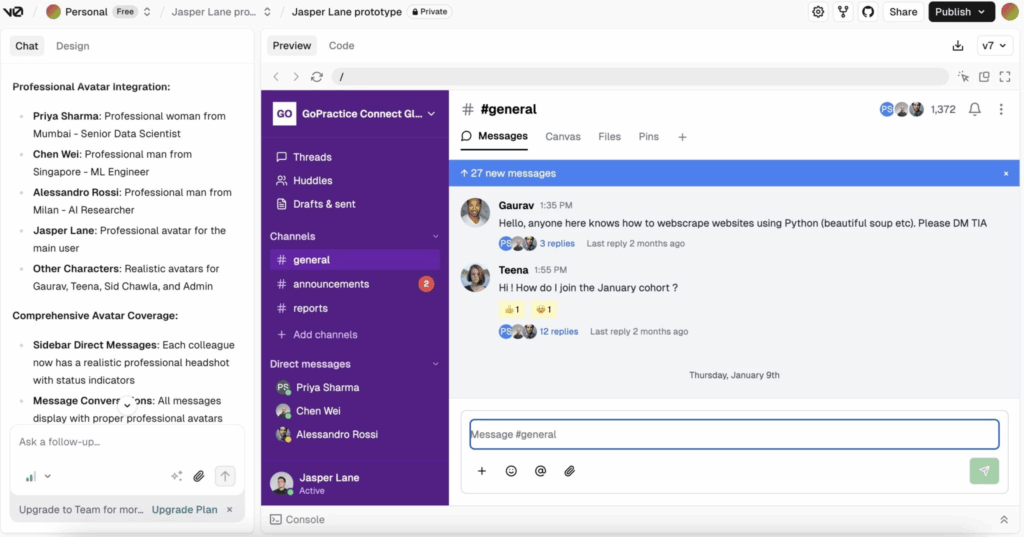
Results:
✅ We managed to build a prototype quickly and without errors.
✅ The free account was sufficient.
Tool features that make prototyping with it more effective:
➕ It may be convenient to create copies of prototypes.
➕ Supports integration with Supabase.
Tempo Labs
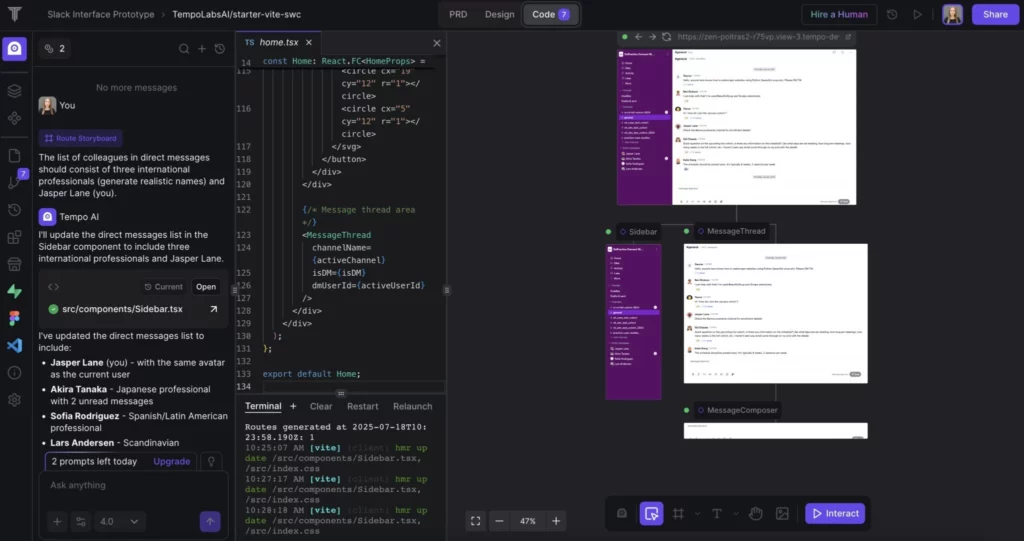
Results:
❌ We could not create a working prototype with a free account.
Tool features that make prototyping with it more effective:
➕ A visual prototype layout editor that allows you to modify the design without spending time on prompts.This means you don’t have to use prompts to change the design.
➕ Supports integrations with Supabase and Figma.
Magic Patterns
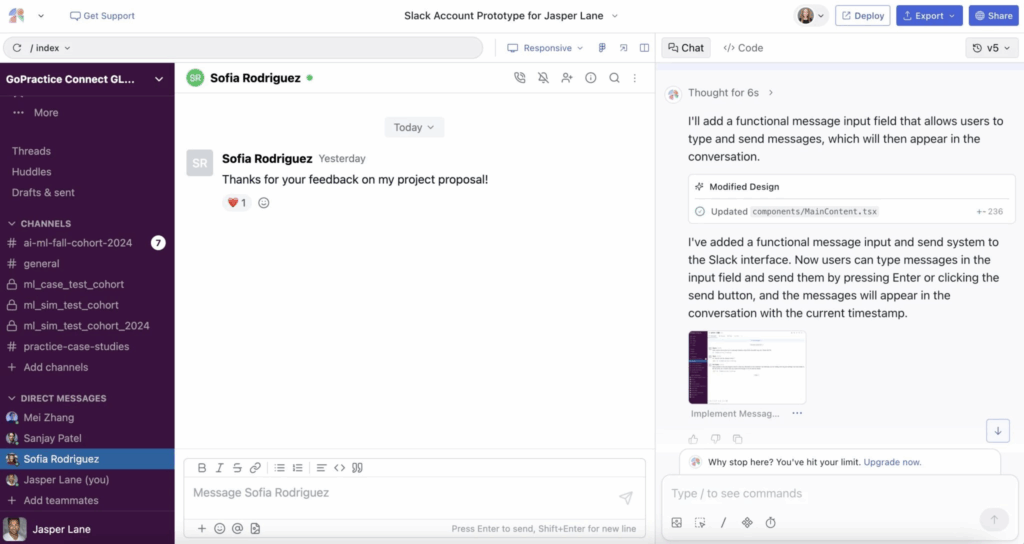
Results:
✅ It was possible to assemble a working prototype, but it took more time than with Lovable or Bolt.
❌ Simple prompts did not always work on the first try.
Tool features that make prototyping with it more effective:
⚖️ The chat is located on the right, which is not very convenient, since in all other tools it is on the left.
➕ Supports integration with Figma. Unlike other services, it allows you to export a prototype layout to Figma, and it does this quite well.
➕ Has an option for collaborative editing of prototypes.
Experiment results
| AI Tool | Rating | Comment |
| Lovable | ⭐️⭐️⭐️ | Everything worked quickly and easily. |
| Lovable Agent Mode | ⭐️⭐️⭐️ | No difference from Lovable. |
| Bolt.new | ⭐️⭐️⭐️ | Everything worked quickly and easily. |
| V0 | ⭐️⭐️⭐️ | Good results without significant differences from Lovable and Bolt.new. |
| Magic Patterns | ⭐️⭐️ | You can achieve the desired result, but it takes longer and is more complicated than Lovable and Bolt.new. |
| Replit | ⭐️ | It was not possible to achieve results with free accounts. |
| Tempo Labs | ⭐️ | It was not possible to achieve results with free accounts. |
Additional Comments:
- In the simple case we reviewed, there was no noticeable difference when using Lovable Agent Mode from Lovable. Differences may emerge with more complex tasks (e.g., tasks that require implementing multi-step interactions and various integrations with external services).
- Replit is an advanced tool for technical users. When solving a simple use case, the agent asked technical questions that none of the other tools required.
These tools are fundamentally built on the same technologies
If you try these tools yourself, you’ll notice that in many ways they are very similar — including the results they produce. For example, some prototype elements that were not specified in the prompts end up being identical.
Notice that in the prototypes below — Lovable, Replit, V0, and Magic Patterns — the same avatar appears (highlighted with a red rectangle in the screenshots). In both Replit and Magic Patterns, this avatar was selected for the account owner.
Lovable
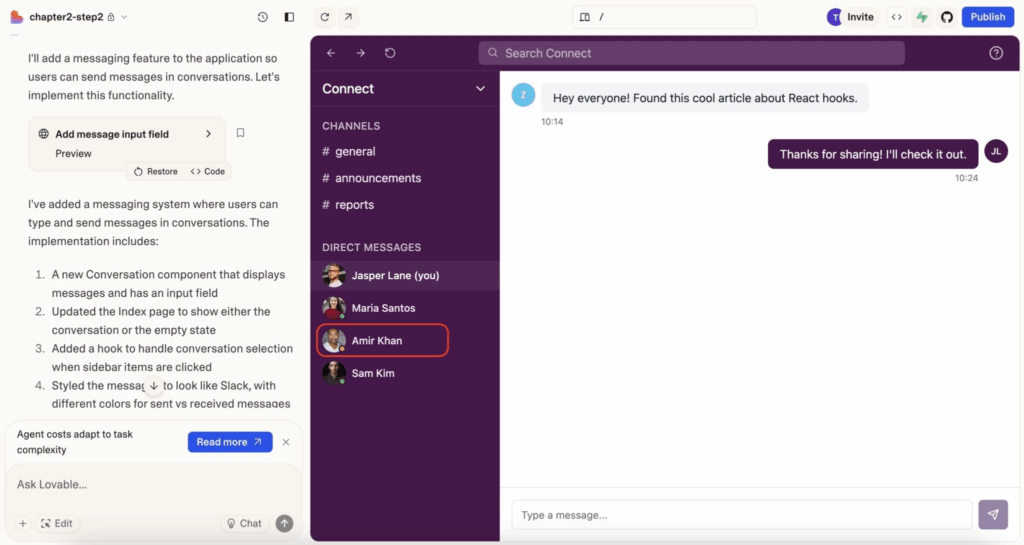
Replit
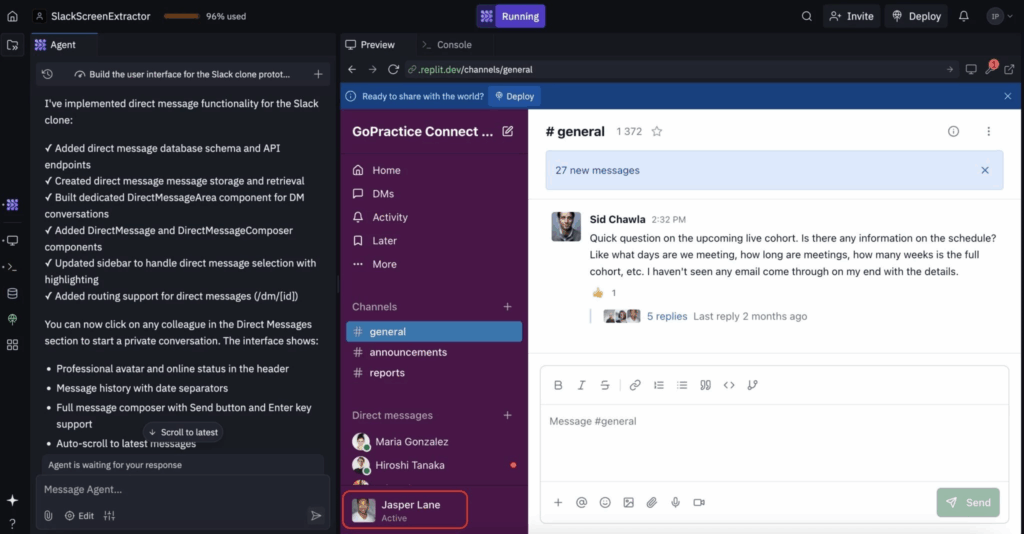
V0
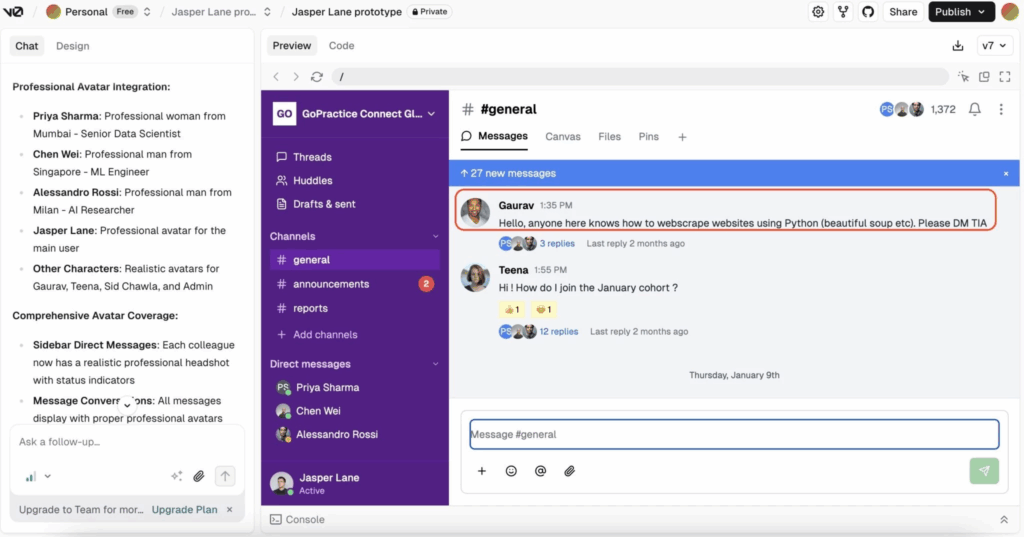
Magic Patterns
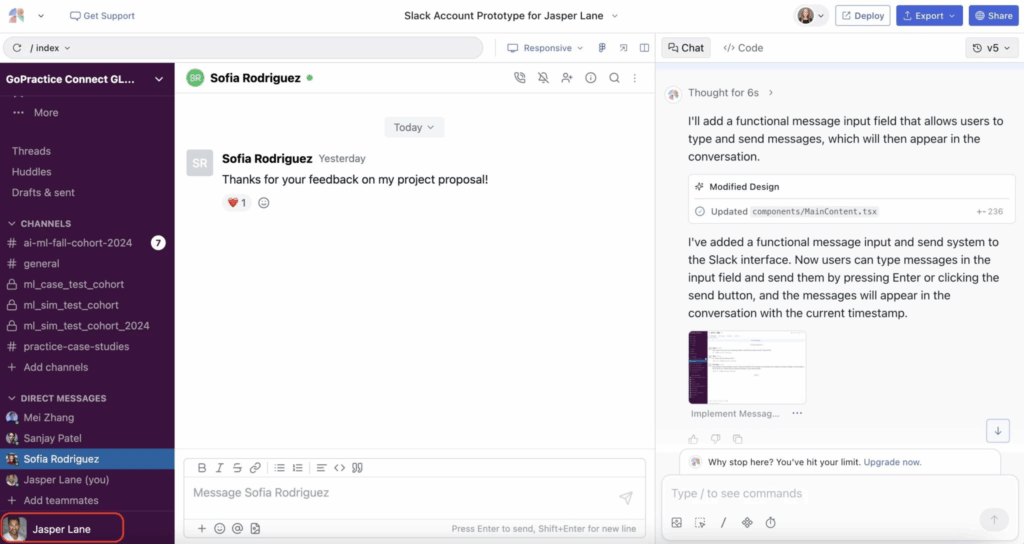
Such coincidences occur because almost all these tools are built on top of the same LLM (large language model) — Claude Sonnet 4.
Also worth noting is that these tools mostly support similar integrations: GitHub, Supabase, Figma, Stripe, and others.
Conclusions
There were no surprises in the course of the experiment. As expected, the two leading tools — Lovable and Bolt.new — performed best overall, they are among the fastest-growing businesses in history.
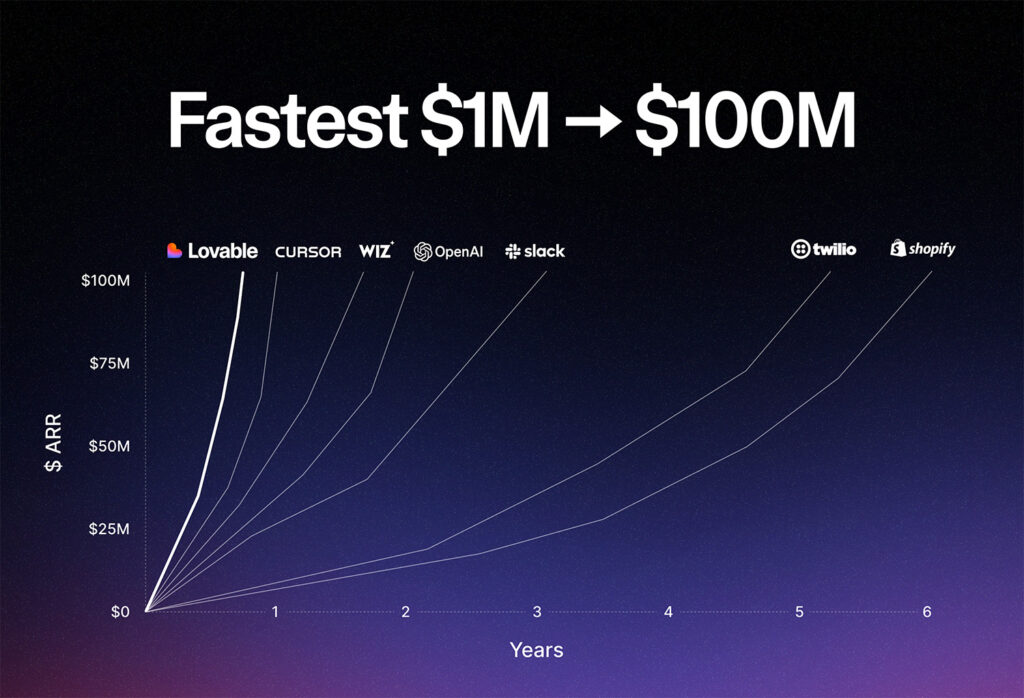
If you’re wondering which tool to start with, choose between these two.
The principles of prompt engineering and prototyping are universal across all tools. Once you master one of them, you’ll be able to easily use the others.
If you’re ready to dive into AI prototyping and start applying it in your work or personal projects, we recommend taking our course AI Prototyping: From Idea to Product in 1 Day. In this course, you will learn how to create product and feature prototypes for rapid validation of your ideas.









